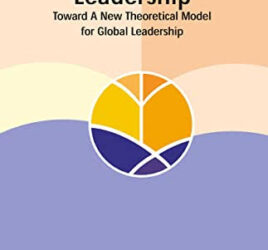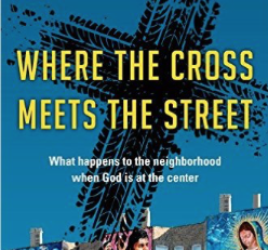Theologian, researcher and practitioner, author Viv Grigg leads and writes with an apostolic and prophetic gift. His book Cry of the Urban Poor[1] is a culmination of walking the urban slums in 10 megacities around the globe. From Manila to Mexico City and from Calcutta to Sao Paolo, Grigg draws from a wide range of first-hand experience and a depth of understanding. Part 1 of the book covers the current context of the global urban challenge. Part 2 discusses various church planting models, proposing a movement of incarnational church-planting teams. The book is an inspiration to read and an excellent tool for missionaries desiring to plant churches among the urban poor.
Whether it is his Kiwi culture or prophetic voice, Grigg is direct and challenges the status quo of missions today. Quoting Greenway, Grigg says, “If the streets are paved, move on.”[2] In reference to the many Christian NGOs doing relief and development work, Grigg comments: “[T]he church has given bread to the poor and has kept the living bread for the middle class. (italics original)”[3] In the 1024 slums of Bangkok only 2% of the churches can be found.[4] Grigg confronts the “trickle down” mentality in which is thought that the gospel will cascade from the upper and middle classes to the lower class. “The gospel ‘trickles up,’” he argues. “The rich middle-class missionary often has only words,” states Grigg.
Personally, I felt confronted by Grigg. “A missionary living on $2,800 per month in a western-style house and sending his children to a westerners’ school while trying to reach people who live on $200 per year is like a B-52 bomber attaching guerillas.”[5] Does that mean there is no role for the middle-class missionary? Grigg would say not directly to the urban poor and not on the team living among and ministering with the poor. “[I]t would be wise for mission directors to create a new orders of men and women called to the poor.”[6] This new team of missionaries would “commit themselves to lives of simplicity, poverty, devotion, community, and sacrifice in areas of marriage and family … similar to those of the older Catholic order, without the legalism.”[7] “Two billion people cry out” for such a movement to begin.[8]
To continue on the role of the missionary, Grigg has found that the educated middle class often cannot break the middle/lower class barrier, but that the rich and educated elite can lay down their wealth to become an incarnational worker.[9] They can then raise up leaders among the laboring poor who in turn can reach out to the destitute poor.
However, we all have a role to play. “As Christians, we must encourage all people in all levels of society to have a focus of ministry to the poor. This does not imply that all should live among the poor.”[10] Middle class Christians can be a source of “transformation of economic life, political life, government bureaucracy, and other structure of the city that perpetuate slum poverty.”[11] For rich churches, it is more important to give personnel than money. Yet, sponsorship of the elderly, orphans, children, seed capital and expansion capital for social businesses, and leadership development programs are good ways to invest finances.[12]
The book is full of statistics, findings, and stories that would be too numerous to recount here. It is a must read for any urban ministry practitioner and a great resource to balance out the many books written in a typical American context. Although I am not called to live like the poor among the poor, I am called to ministry to the poor. Griggs balanced approach helped me to more clearly define my role as a middle-class international church pastor in western housing and children at western schools. I can help with funding in wise ways as he outlined, as well as raise up local leaders who will raise up the incarnational workers who will work directly with the poor.
By Jacob Bloemberg
[1] Viv Grigg, Cry of the Urban Poor (Monrovia, Calif.: MARC, 1992).
[2] Ibid., 11.
[3] Ibid., 12.
[4] Ibid., 13.
[5] Ibid., 15.
[6] Ibid., 17.
[7] Ibid.
[8] Ibid., 19.
[9] Ibid., 242.
[10] Ibid., 243.
[11] Ibid., 263.
[12] Ibid., 283-84.




